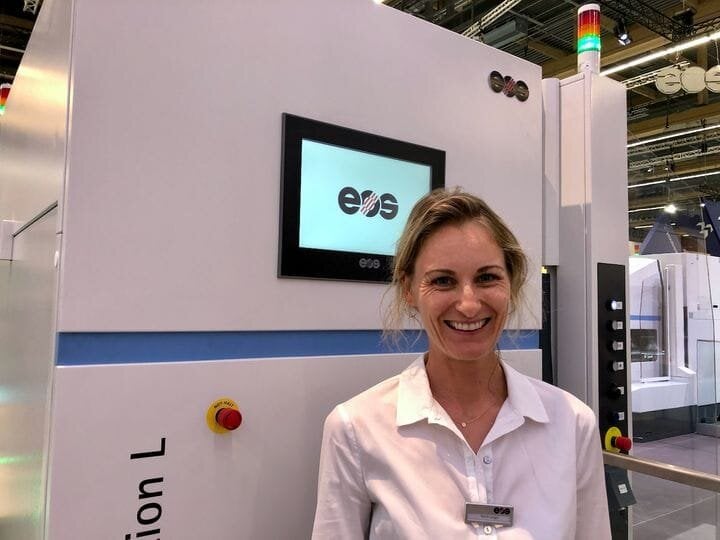![EOS CEO Marie Langer [Source: Fabbaloo]](https://fabbaloo.com/wp-content/uploads/2020/05/image-asset_img_5eb08cb058375.jpg)
We had the opportunity to have a sit-down with EOS’ new CEO, Marie Langer.
Langer took the helm of the privately-owned company earlier this year from her father, longtime CEO and Founder Hans J. Langer. EOS is one of the leading 3D printer manufacturers today, with industrial 3D printers installed and 3D printing thermoplastics and metals around the world.
Companies tend to shift when their leadership changes, and this seems to be one of those moments for EOS. Perhaps the biggest changes in their history are about to be revealed. We asked Langer for her thoughts on what might happen next at EOS.
EOS Dynamic Organization
Langer explained to us that her primary goal is to create a much more “dynamic organization” that can keep up with the competition. This could mean many things, but in Lagner’s definition this means their regional operations will soon gain a lot more independence from EOS headquarters.
Langer wants EOS to be both global and local at the same time, and this allows them to be far closer to the customers, as EOS’ regional divisions will make far more decisions than they do today.
At headquarters, it seems Langer will be creating organizational units dedicated to specific machines and products. These presumably will interface with the regions who will require centralized expertise and services.
I believe this is a very important strategy for EOS, as most expanding companies discover there are significant differences from region to region, and often it’s only the local staff that deeply understand the optimal paths forward for the area.
By executing this strategic change in authority, Langer hopes to not only increase the effectiveness of the regions, but also reduce the overall bureaucracy at EOS. That should make the company itself far more efficient.
EOS Accountabilities
Are there challenges in achieving these goals? Indeed, Langer says they must develop very clear accountability and roles in the redefined EOS organization. Langer adds that smooth communications between the regions and headquarters will be of great importance.
If these changes are implemented — and I understand there is a transition underway at the moment — they should make EOS far more reactive to local conditions and events. It could be that if Langer succeeds with these changes it could set the scene for a significant increase in EOS sales.
Langer explained that she wishes to deploy three key concepts across the company: trust, ownership and transparency. She believes that everyone should have the same knowledge, but also be accountable for decisions. She says “communication is key”.
She takes these principles so seriously that she even intends on bringing EOS customers into internal strategy meetings, something I’m pretty sure no other major 3D printer manufacturer has done. This makes sense, as EOS clients are very often on the edge of the technology envelope, and could generate some interesting viewpoints to any discussion. Langer believes EOS’ role is to ensure customers succeed, and this could be part of it.
EOS Service Culture
The transformation to a service culture is a big project, but at this point in our conversation I realized she had not yet mentioned any technological developments, discussing only organizational matters. I asked Langer whether she has technology plans for the future.
Langer responded with a note of confidence on the present state of EOS technology, saying she believes EOS is still ahead of their competitors. She explained their technological strategy is to be incrementally innovative, as they have done on their popular M290 metal 3D printer, for example.
I think she’s focusing her energies on the parts of EOS that most need attention, and that she feels the hardware and software areas are in good shape.
As our brief conversation closed, Langer impressed me as a highly energetic leader on a mission. She’s setting objectives that everyone in the company will know and follow, and these should put EOS in a very good position for the future.
Via EOS

